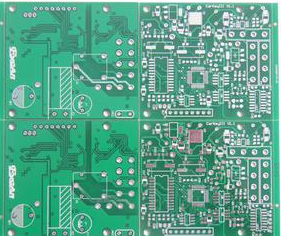PCB design is complicated, and various unexpected factors frequently affect the realization of the overall plan. How can we tame scattered components with different personalities? How can I draw a neat, efficient and reliable PCB diagram? Let us take stock today.
PCB design seems complicated. It is necessary to consider the direction of various signals as well as the transmission of energy. The distress caused by interference and heat is always on the go. But in fact, the summary is very clear, and you can start from two aspects:
To put it bluntly, it is: "how to put it" and "how to connect".
1. Follow the layout principle of "big first, then small, difficult first, easy first", that is, important unit circuits and core components should be laid out first. This is the same as eating a buffet: buffets have a limited appetite and pick the ones you like first, and when PCB space is limited, pick the important ones first.
2. The principle block diagram should be referred to in the layout, and the main components should be arranged according to the main signal flow of the board. The layout should meet the following requirements as much as possible: the total wiring should be as short as possible, and the key signal line should be the shortest; the layout of the decoupling capacitor should be as close as possible to the power supply pin of the IC, and the loop formed between it and the power supply and ground should be the shortest; reduce the signal Run unjustly to prevent accidents on the road.

3. The arrangement of components should be convenient for debugging and maintenance, that is, large components cannot be placed around small components, and there must be enough space around components that need to be debugged. It will often become very embarrassing if it is too crowded.
4. The heating elements should generally be evenly distributed to facilitate the heat dissipation of the veneer and the whole machine. Temperature sensitive devices other than the temperature detection elements should be kept away from the components that generate large amounts of heat.
5. For the circuit parts of the same structure, use the "symmetrical" standard layout as much as possible; optimize the PCB layout according to the standards of uniform distribution, balanced center of gravity, and beautiful layout.
6. The same type of plug-in components should be placed in one direction in the X or Y direction. The same type of polarized discrete components should also strive to be consistent in the X or Y direction to facilitate production and inspection.
7. High voltage and large current signals are completely separated from weak signals of small current and low voltage; analog signals are separated from digital signals; high-frequency signals are separated from low-frequency signals; the spacing of high-frequency components should be sufficient. In the layout of components, appropriate consideration should be given to placing the components of the same power supply as close together as possible to facilitate future power supply separation.
The above are the main considerations about "how to put" the PCB layout. The "how to connect" is relatively more complicated, generally speaking:
Key signal line priority: Prioritize routing of key signals such as analog small signals, high-speed signals, clock signals, and synchronization signals; density priority principle: Start routing from the most complicated devices on the board. Start wiring from the most densely connected area on the board.